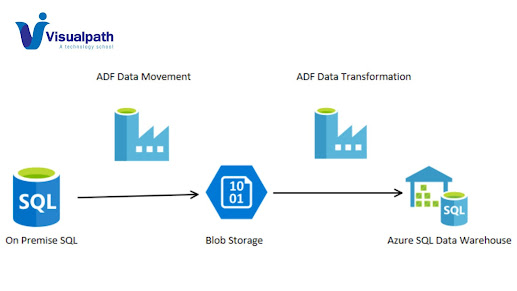Synergy of Big Data | Databricks and PowerBi
In the dynamic landscape of data management, organizations are increasingly turning to powerful cloud platforms like Azure for their data engineering needs. Azure, with its comprehensive suite of services, offers an ecosystem that enables seamless data processing, storage, and analytics. Two key components of this ecosystem, Databricks and PowerBI. - Microsoft Azure Online Data Engineering Training
Databricks PowerBI?
Databricks, a unified analytics platform,
is at the forefront of Azure's data engineering arsenal. Leveraging Apache
Spark, Databricks empowers organizations to process large-scale data sets with
lightning speed and efficiency. Its collaborative environment allows data
engineers, data scientists, and business analysts to work seamlessly together,
fostering a culture of innovation and agility.
Azure
Databricks?
Azure Databricks integrates seamlessly with
various Azure services, enabling the creation of end-to-end data pipelines.
From data ingestion to transformation and storage, Databricks streamlines the
entire data engineering process. The platform supports multiple programming
languages, making it accessible to a wide range of users, while its
auto-scaling capabilities ensure optimal resource utilization.
PowerBI?
PowerBI – Microsoft's business analytics
tool that transforms raw data into insightful visualizations and interactive
reports. Integrating PowerBI with Azure Databricks unlocks the full potential
of data engineering efforts. The PowerBI connector for Azure Databricks allows
users to pull in data directly from Databricks clusters, facilitating real-time
analytics and reporting. - Azure
Databricks Training
What
are the Advantages of Integration of Big Data?
1)
One of the key advantages of
this integration is the ability to create data pipelines in Databricks and
visualize the results in PowerBI dashboards. This end-to-end integration
enhances decision-making processes by providing stakeholders with timely and
actionable insights.
2)
Moreover, the scalability of
Azure allows organizations to handle increasing data volumes effortlessly. As
data grows, Databricks and PowerBI seamlessly scale to meet the demands,
ensuring that analytics and reporting remain robust and performant.
3)
Collaboration between data
engineers and business analysts becomes more meaningful with this integration.
Data engineers can focus on optimizing data pipelines in Databricks, while
business analysts leverage PowerBI's intuitive interface to derive insights and
create impactful visualizations.
Conclusion,
The integration of Azure Databricks and
PowerBI represents a powerful alliance. Organizations leveraging this
combination benefit from a unified platform that streamlines data processing,
analysis, and reporting. As the digital landscape continues to evolve,
embracing such advanced tools becomes imperative for staying ahead in the data-driven
era. - Azure
Data Engineering Online Training
Visualpath is
the Leading and Best Institute for learning Azure Data Engineering Training. We provide Azure Databricks Training, you will get the best course at an affordable cost.
Attend Free Demo Call on - +91-9989971070.
Visit Our Blog: https://azuredatabricksonlinetraining.blogspot.com/
Visit: https://www.visualpath.in/azure-data-engineering-with-databricks-and-powerbi-training.html

.jpg)

Comments
Post a Comment